Mike Flanagan's Lasser Glass: Where To Find Oculus' Haunted Mirror In Each Of The Filmmaker's Horror Projects (Including House Of Usher)
Mirror, Mirror, on the wall...
Part of the joy in following the careers of certain authors, directors, musicians and other artists is tracking various references and motifs that rise up from one project to the next. Sam Raimi has his “Classic” 1973 Oldsmobile Delta 88, Stephen King has his Castle Rock-verse, and Mike Flanagan has the Lasser Glass, one of horror fiction’s most malevolent mirrors. Out of the 13 widely known movies and TV shows he’s helped create thus far, the Lasser Glass has been utilized in ten of them, and that definitely includes Flanagan’s latest and greatest Netflix genre epic, The Fall of the House of Usher.
Now that the esteemed writer/director has delivered double-digit appearances from the ornately framed decoration, there’s no better time to peer into the Lasser Glass to see what stares back, while pinpointing where fans can look to see each time the haunted object showed up on-screen to wreak havoc on the unwitting fools in its vicinity.
What Is The History Of The Lasser Glass?
As it was largely laid out during a fitful explanation in the first half of 2013’s Oculus, the Lasser Glass is at least 400 years old, and its unmistakably detailed frame was said to be carved out of a single chunk of Bavarian Black Cedar. The earliest known reference to the mirror places it in the possession of Philip Lasser, who hung it above the fireplace in his 18th century Leicester, England abode, and went missing shortly after; his wife was discovered burned to death in the fireplace. It was then auctioned off to an American, which continued its deadly chain.
After Robert Clancy, who stopped eating and starved to death), the mirror showed up decades later in the possession of New Englander Mary O’Connor, who died of dehydration despite no lack of water around her. When the woman’s niece took over the home, she was driven mad within a month’s time, and murdered her own children by strangulation. The Lasser Glass’ horrifying influence continued on until landing within the home of Marie and Alan Russell, the quickly doomed parents of Oculus’ main characters Kaylie and Tim. And some point after that, it landed back on the auction block, and was set to be purchased by a Singapore resident named Mr. Poh, though he doesn’t appear to have ever received it.
Of course, the Lasser Glass’ backstory also hypothetically includes many of the projects mentioned here, since the mirror’s evil energy is theoretically a cause for much of the chaotic horror that spreads throughout Mike Flanagan shows and films.
Where To Find The Lasser Glass In Each Of Mike Flanagan's Creations
For all that its abridged history and supernatural effects were laid out in Oculus for audiences around the country, the object's origins actually go back quite a few years earlier, to the short film that helped kick-start his fright-crafting career.
Oculus: Chapter 3 - The Man With The Plan (2006)

In 2006, Mike Flanagan wrote, produced, directed and co-edited the short film Oculus: Chapter 3 - The Man with the Plan, which is essentially a precursor to the eventual feature, centering entirely on the Lasser Glass and its various life-draining and hallucinatory effects. Rather than splitting between timelines, the short focuses on Scott Graham’s Tim in the current day as he attempts to prove that the mirror is haunted.
Your Daily Blend of Entertainment News
Oculus (2013)
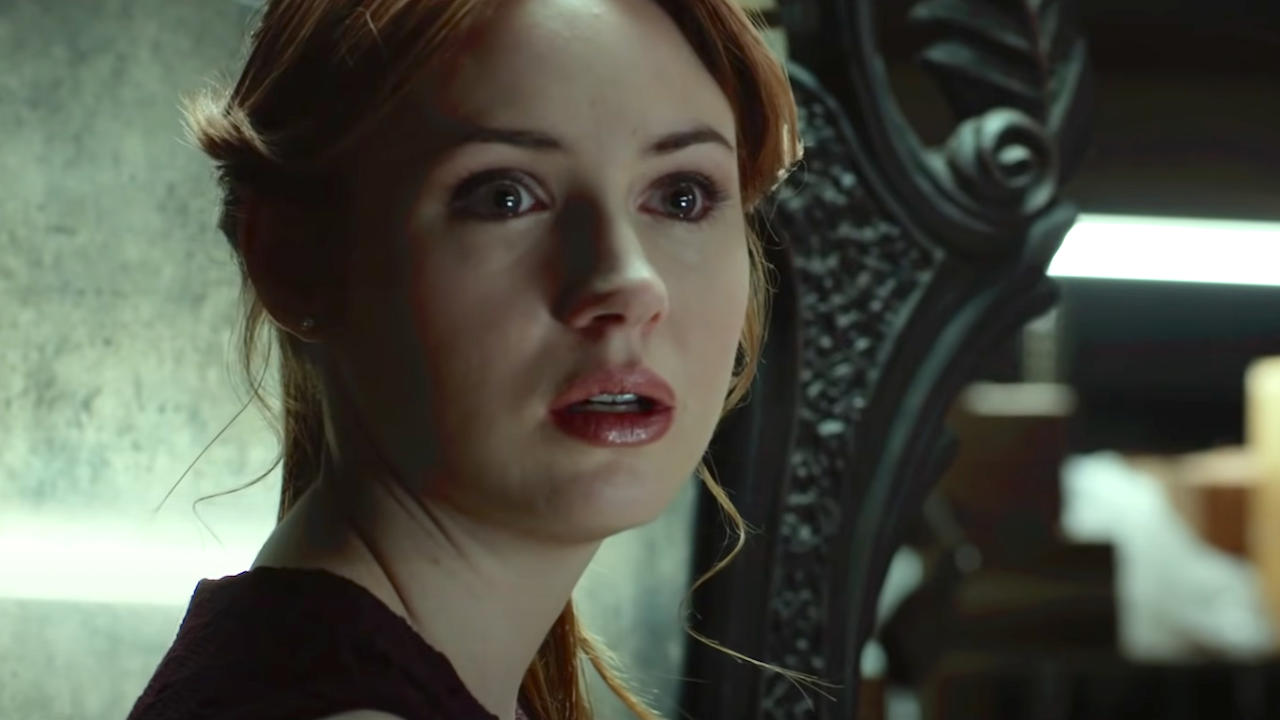
Like the above short, the 2013 feature film Oculus is wholly fixated on telling the story of the central artifact, with Karen Gillan and Brenton Thwaites as two siblings whose childhoods were forever changed after the Lasser Glass came into their lives. Understandably, the mirror appears in a wide assortment of shots throughout the film, and is even damaged along the way.
Ouija: Origin of Evil (2016)

2016 was for Mike Flanagan, who helmed three separate features released that year: the Netflix horrors Hush and Before I Wake, and the big screen sequel Ouija: Origin of Evil. The prior two, as well as the filmmaker's 2013 feature debut Absentia, are the lone examples of Lasser-free projects.
That said, the most eagle-eyed viewers out there could pick up on the mirror's presence a little after the 1:07:00 mark. As Lulu Wilson's Doris Zander is walking through the basement, a section of the frame and glass can be seen stored away in a corner.
Gerald's Game (2017)

Though the domestic setting of Carla Gugino's sanity-straining experiences in Gerald's Game would have allowed Flanagan ample chances to hang the Lasser Glass up somewhere, he took a far more curious route. Rather than using the mirror directly, Flanagan had the headboard of the bed Gugino's Jessie was cuffed to designed to match up with the mirror's bottom carvings.
The Haunting Of Hill House (2018)
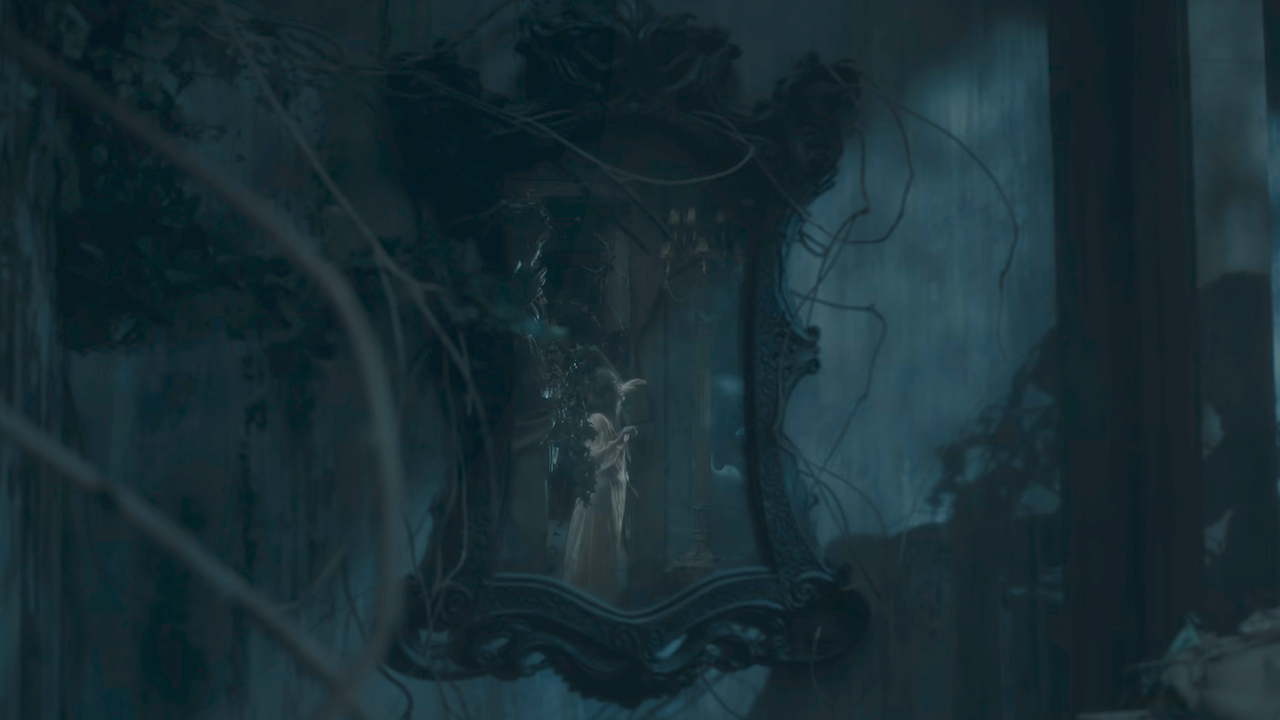
With all the ghoulish twists and turns happening to the Crane family in their massive Hill House estate, the Lasser Glass would have needed to go overboard with the evil machinations just to keep up. It can't be found in the Red Room, however, but rather hanging on the wall between of the main floor's overbearing and unsettling statues, in a dark and neglected spot. Those hoping to see it themselves should seek out the 37:25 timestamp from Hill House's Episode 1.
Doctor Sleep (2019)
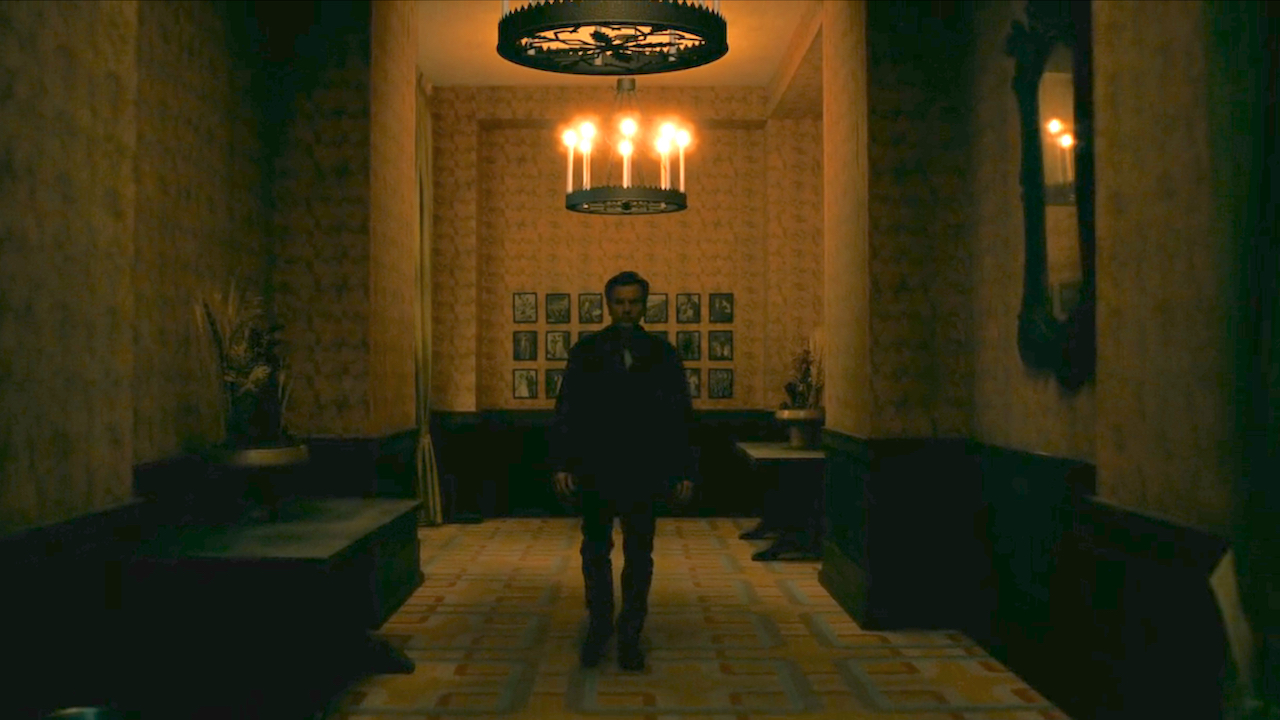
With all the nerding out that Mike Flanagan no doubt took part in while recreating The Shining's iconic Overlook Hotel for his 2019 sequel Doctor Sleep, based solely on his fandom and experiences with Stanley Kubrick's movie, I can only hope he found an equal amount of glee in hanging the Lasser Glass up on one of the Overlook's hallway walls. The moment sees Ewan McGregor's Danny Torrance strolling determinedly, and pops up right around the 2:00:00 mark.
The Haunting Of Bly Manor (2020)
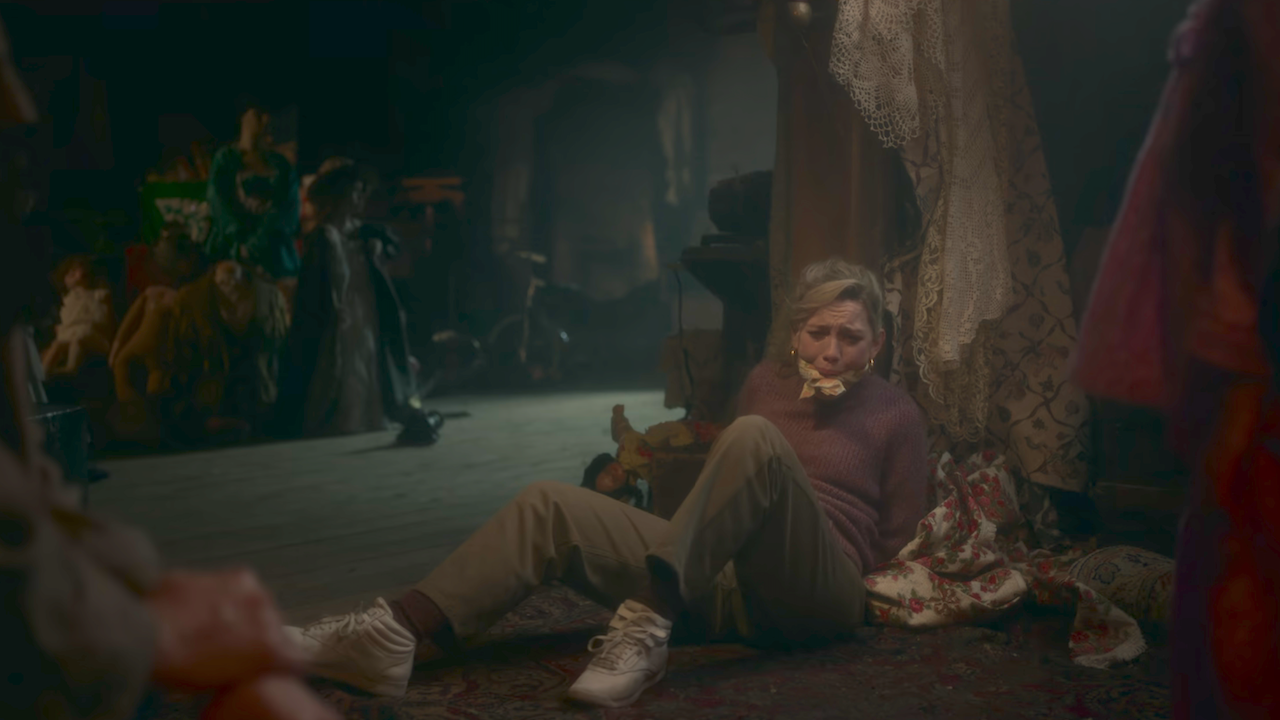
For his second anthological Haunting series, Mike Flanagan brought the debaucherous mirror up from the basements and ground floors and set it up in Bly Manor's attic, where it can be seem in the background in the opening minutes of Episode 7, when Victoria Pedretti's Dani is being held semi-hostage by Peter and the kids.
Midnight Mass (2021)

Midnight Mass features a backstory that seems to lay out exactly how Hamish Linklater's Father Paul Hill ended up with his particular affliction that led to much death and destruction on Crockett Island. And yet it's hard to shake the feeling that the Lasser Glass, which sat right there behind the stage curtain in the rec center, had absolutely zero effect on the blood-soaked events. The best time to catch the object is around nine minutes into the the third episode as Paul and Zach Gilford's Riley are chatting.
The Midnight Club (2022)

Mike Flanagan fans had tons of places to search for the Lasser Glass within the Christopher Pike-honoring anthology The Midnight Club. It didn't pop up in any of the hospice patients' stories, but rather in the dark and largely ignored corners of Brightcliffe Home's basement. Episode 6 features the gang making their way down there, and the mirror can be seen hanging on the right-side wall a little after the 46-minute mark, but we'll never know if it would have had an effect on Season 2 plans.
The Fall Of The House Of Usher (2023)
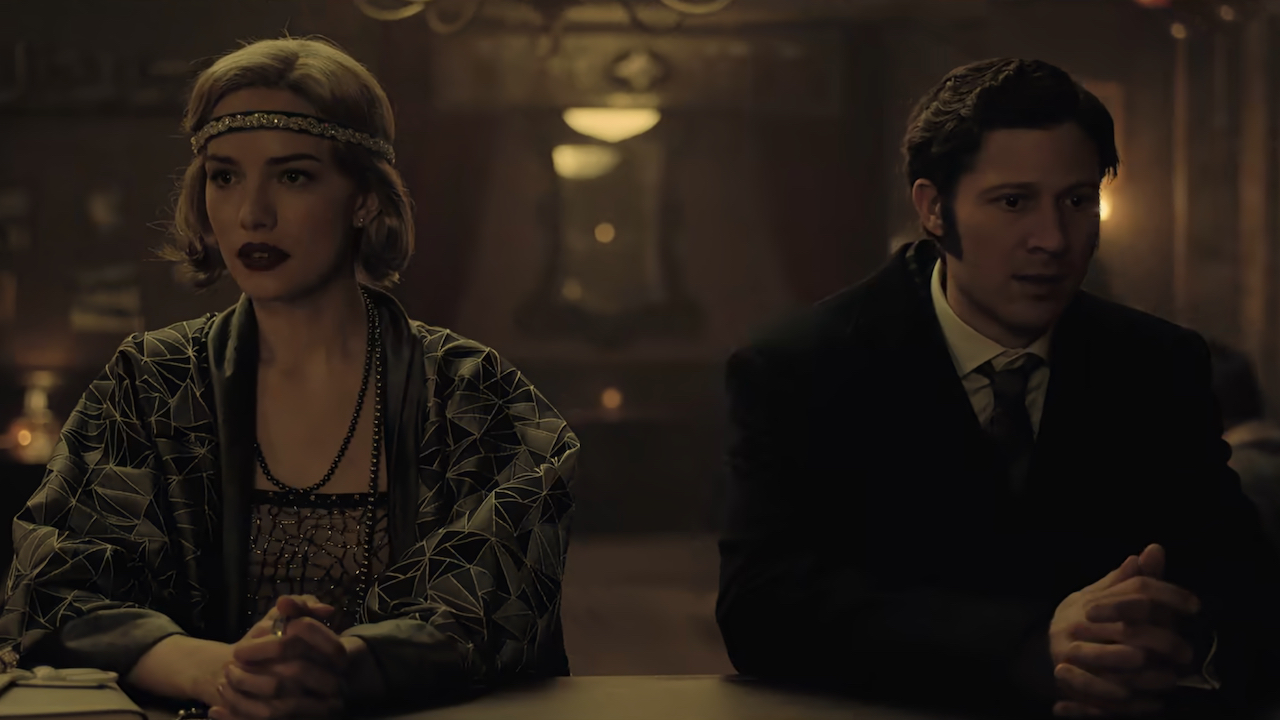
The Fall of the House of Usher didn't keep fans waiting for very long to see the historically cursed mirror, as it showed up in Episode 1, also around the 46-minute mark, in the background of Verna's mysterious bar where Roderick and Madeline go to build up alibi legitimacy after commiting a most New Year's evil act. This seemingly marks the first time the Lasser Glass has appeared in a location that technically exists outside of time and space, which invites the question of exactly how Verna gained access to it.
But guess what? That wasn't even the only reference to the Lasser Glass in House of Usher, though it was the only physical mirror on display. The other moment comes in Episode 4, "The Black Cat," when Rahul Kohli is shirtless in bed, and fans are able to clearly see he has a chest tattoo that's very much shaped the the cursed frame, set between two roses.

Given how much Mike Flanagan enjoys seeing if his faithful fanbase can find all of the hints and references sprinkled throughout his shows and movies, it's entirely possible that the examples above haven't exhausted all the Lasser Glass appearances available for discovery. Now when is Funko gonna get on the ball and make a Pop figure out of that mirror?
The Fall of the House of Usher and quite a few other Mike Flanagan projects discussed above can be found streaming with a Netflix subscription or a Max subscription, while Oculus: Chapter 3 is currently available on YouTube.

Nick is a Cajun Country native and an Assistant Managing Editor with a focus on TV and features. His humble origin story with CinemaBlend began all the way back in the pre-streaming era, circa 2009, as a freelancing DVD reviewer and TV recapper. Nick leapfrogged over to the small screen to cover more and more television news and interviews, eventually taking over the section for the current era and covering topics like Yellowstone, The Walking Dead and horror. Born in Louisiana and currently living in Texas — Who Dat Nation over America’s Team all day, all night — Nick spent several years in the hospitality industry, and also worked as a 911 operator. If you ever happened to hear his music or read his comics/short stories, you have his sympathy.
